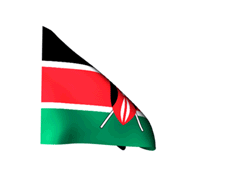DELHI HIGH COURT REJECTS THE BAIL APPLICATION OF THE ACCUSED IN THE ‘DELHI RIOT MATTER’

The Hon’ble High Court of Delhi passed a Judgment dated October 14, 2020 in the case of Ashraf Ali v. State of NCT of Delhi (Bail Application 2614/2020) and held that since the Petitioner was a part of the #unlawful assembly which claimed an innocent life, he cannot be granted #bail.
In the present case, an FIR was registered on 28.02.2020 against the Petitioner for the offences punishable under Section 147/148/149/302/201/436/427 IPC as he was accused of being involved in stone-pelting and raising anti-community slogans on 24.02.2020. On 05.03.2020, 16.03.2020 and 01.04.2020 statements of witnesses Anil Pal, Ankit Pal and Amit Pal under Section 161CrPC were respectively recorded. However, none of the witnesses identified the Petitioner. But, in the supplementary charge sheet they identified the Petitioner as “Khalnayak”. A final report against the 12 accused persons was filed by the Police and the Petitioner was mentioned as Accused No.4.
The Counsel for the Petitioner contended that there’s no CCTV footage which proves that the Petitioner was a part of any mob on 24.02.2020. Moreover, as per the statement of a witness named Himanshu, the mob consisted of about 200-250 persons and he could identify only 5 people. No Test Identification Parade was conducted. The name of the Petitioner came up for the first time in identical supplementary statements dated 22.06.2020.
Furthermore, the Counsel contended that although the address of the Petitioner and the place of incidence that was set on fire correspond to each other, it is not a sufficient evidence to incriminate the Petitioner. The only evidence against the Petitioner was the statement of witness Himanshu u/s 161 CrPC dated 11.03.2020 that led to the arrest of the Petitioner.
A detailed investigation was also conducted from 12.03.2020 till 03.06.2020, however, no incriminating material was found against the Petitioner for commission of offences under Sections 302/201/436 IPC in the final report and the Petitioner was being falsely implicated under the afore mentioned Sections by virtue of Section 149 IPC. There was no evidence to prove that the Petitioner was involved in the act leading to the death of Dilbar Negi, the deceased.
Contradictory witness statements, absence of Test Identification Parade and CCTV Footage, therefore, prove that the Petitioner was being falsely implicated.
On the other hand, the ASG submitted that in the CCTV Footage the Petitioner could be seen promoting enmity and disharmony, pelting stones and instigating others on 24.02.2020 and that the Petitioner was part of the mob which caused the death of Dilbar Negi.
On perusal of the contentions raised by the parties, the Court held that “28. It is not in dispute that the term “Test identification parade” is used as a means to examine the truthfulness of the witness and his ability to identify unknown persons. The test is generally not necessary to identify the accused if the witness knows the accused and can recognise the accused in moonlight and lantern.
The purpose is primarily to test and strengthen the existing substantial evidence of the witness in court. If the witness cannot name the accused and can only identify him on the basis of his physical appearance then the Test cannot be taken into consideration.”
The Court further held that it cannot be denied that Petitioner was a part of the unlawful assembly. There was also a loss of life and damage to the public property. Since the riots claimed an innocent life, it is bound to attract Section 302 IPC and therefore, the Petitioner could not be granted bail.
Suchitra Upadhyay
Associate
The Indian Lawyer & Allied Services




































Leave a Reply